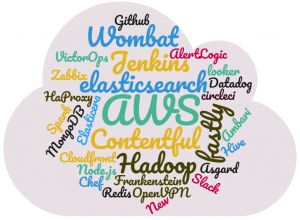For many organisations, the cloud and cloud-native application refactoring is attractive. This is often due to the belief that it will reduce complexity and risk for them, when compared to running their own DCs. The theory being that public cloud architecture is simpler.
By going all in, however, many modern “cloud-native” applications are built upon a multitude of solutions, services and elements. This could be anything from a third party PaaS / SaaS provider for ID management, to “rolling your own” caching and search solution. It could even be simply implementing a broad set of management tooling for code and infrastructure automation.
The diagram below represents the technologies involved in one such solution. It’s clearly a highly distributed application with dependencies across many different platforms and cloud-vendors! It’s also not the only example of a solution I have seen in the new cloud-native world!
The risk is, the failure of any single one of those SaaS, PaaS or IDM platforms, automation tools or API gateways could leave an application offline and its owners potentially powerless to resolve it! Developers are exchanging the complexity of building elements into their applications natively, for the risk of distributing (out-sourcing?) them out to other cloud platforms.

Public cloud architecture isn’t always simples!
That is not to say this is not a reason to go to cloud and refactor applications to be more cloudy! The relative benefits to an organisation may far outweigh the risks. The key thing is that in any organisation, requirements from the business will always trump any expectations of simplicity or even consistency!
We are simply exchanging one set of complexities for another!
Thoughts? Feel free to discuss in the comments below!




 RSS – Posts
RSS – Posts